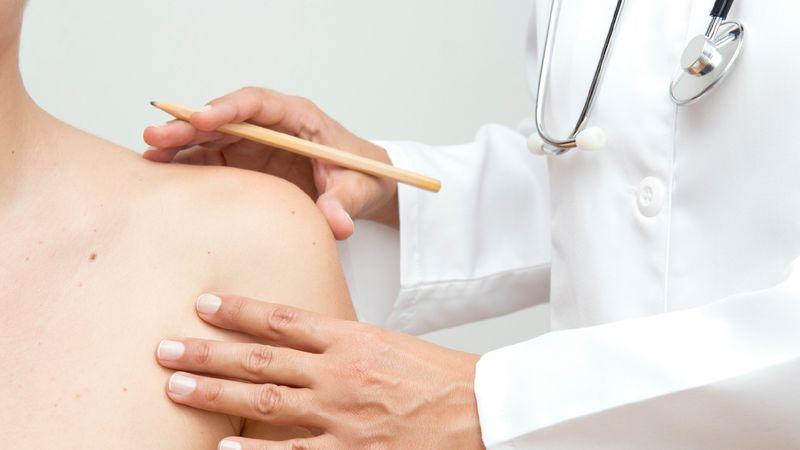About Skin

The skin is the largest organ of the body. The cutaneous membrane is resistant and flexible and covers our entire surface, an area of 1.5 to 2 m2. The skin is a few millimeters thick in its thickest area. This thickness varies depending on the needs of the body, and also on age and sex. Commonly, women and the elderly have thinner skin than men and young people.
The skin protects us from the environment around us while, at the same time, allowing us to interact with it. To fulfill these important functions, the skin has a complex structure, with several layers.
What are the layers of the skin?
The skin has three layers: epidermis, dermis and hypodermis.
Epidermis
The epidermis is the outermost layer of the skin, which is seen, and is formed by thin layers of cells undergoing a continuous renewal process. It constitutes a waterproof physical barrier that protects us against microorganisms and against ultraviolet (UV) radiation. It is also primarily responsible for our skin tone.
Dermis
The dermis is located under the epidermis and forms a dense and elastic network of collagen fibers, which provides firmness, strength and elasticity to the skin. It contains sweat glands, hair, hair follicles (the sacs where hairs arise from), muscles, sensory neurons and blood vessels. Among other functions, the dermis plays a role in skin repair and healing from wounds.
Hypodermis
The hypodermis or subcutaneous tissue is the deepest layer of the skin and is located under the dermis. It consists of fatty and connective tissue. The hypodermis contains the largest source of vessels and nerves, as well as some adnexa—such as hair follicles—and sensory neurons. Its fatty tissue provides thermal insulation and, due to its soft texture, protects body organs located beneath. Fat cells in the hypodermis produce several hormones and vitamin D that is only generated during sun exposure.
What are the functions of the skin?
Some of the most important functions of the skin include:
- Impermeable barrier to water. When the water comes into contact with the skin, it fails to expel the nutrients in it.
- Protection against external agents. It protects us from pathogenic microorganisms and chemical substances.
- Body temperature regulation. When the skin is exposed to the cold, the blood vessels of the dermis contract and thus preserve the heat inside the body. As a result, the skin reaches the temperature of the cold medium to which it is exposed and becomes paler. In addition, having goosebumps also helps us retain heat, because the contraction of the hair erector muscles closes skin pores preventing heat loss.
In contrast, when it is hot, vessels dilate to release body heat outside the body, and therefore the skin becomes red. Also, sweating occurs in the epidermis and cools down on contact with outside air, thus cooling the body. - Sensation. Nerve endings in the skin detect temperature, pressure, vibration, touch and pain.
- Protection against UV light. Melanin is the chemical pigment that confers color to the skin and protects us against UV rays, capable of damaging skin cells. It is produced by cells called melanocytes, located in the epidermis.
- Wound repair and regeneration. When we get a wound on the skin, blood flow to it increases in order to provide substances that protect it from infections and promote rapid wound healing.
- External physical appearance. The appearance of the skin allows us to ascertain the age and health status of an individual. Certain changes in skin coloration can also be a sign of disease. For example, a yellowish coloring is typical of people with hepatitis.
- Water and fat reservoir. The deepest layer of the skin serves as storage for water, fat and metabolites.
How can you care for your good skin care?
Good skin care will keep it healthy, helps delay natural aging and prevent various health problems5.
These are 5 tips for healthy skin care:
1. Protect yourself from the sun
One of the most important ways to take care of your skin is to protect it from the sun to avoid or diminish the appearance of wrinkles—especially in the face—or skin spots, and to help reduce the risk of skin cancer.
To help achieve the best protection, you can adopt several measures in your daily skin care routine:
- Use a good sunscreen. Use a broad-spectrum sunscreen—to protect you from different types of radiation—and with a high SPF (the whiter your skin, the higher SPF you will need). Reapply generously every 2 hours or more often if you are in the water or if you are exercising and perspiring.
- Avoid exposure during peak sun hours. Seek shade, between 10 a.m. and 4 p.m., when the sun's rays are strongest. If you go to the beach, protecting yourself under an umbrella is not an effective solution, since the amount of radiation received outside or under the umbrella is very similar. This occurs because the sand reflects 20% of the radiation it receives6,7.
- Wear protective clothing. Cover your skin with tightly woven dark colors garments—avoid wearing whites or pastel colors—or wear clothing with ultraviolet protection factor (UPF)7.
2. Don’t smoke
Smoking damages the skin's collagen and elastin (the fibers that give it elasticity and strength) and narrows tiny blood vessels in the skin, thus decreasing blood flow and, therefore, the amount of oxygen and nutrients delivered to the skin. All this makes the skin pale, wrinkled and aged looking. In addition, smoking increases the risk of squamous cell carcinoma, a common form of skin cancer that originates in the epidermis.
3. Treat your skin gently
Daily cleansing routines can take a toll on your skin. To keep it gentle, follow these tips:
- Shower and bath time. Limit shower or bath time and use and use warm—rather than hot—water to preserve the skin’s natural oils.
- Avoid strong soaps. Instead, choose mild cleansers, with an adequate pH that do not alter the skin’s protective barrier.
- Moisturize your skin. After washing or bathing, gently pat or blot your skin dry with a towel so that some moisture remains on your skin. If your skin is dry, use a moisturizer that fits your skin type.
4. Eat a healthy diet
A varied diet consisting of plenty of fruits, vegetables, whole grains and lean proteins will help you look and feel your best. In addition, drinking plenty of water will help keep your skin hydrated.
5. Manage stress
Excessive or uncontrolled stress can trigger the development of skin problems such as psoriasis flare-ups, atopic dermatitis or acne breakouts.
References
- Kang S, Amagai M, Bruckner AL, Enk AH, Margolis DJ, McMichael AJ, Orringer JSm Fitzpatric’s Dermatology 9th edition McGraw Hill 2019. Wolff K, Goldsmith LA, Katz, SI, Gilchrest BA, Paller AS, Leffell DJ. Fitzpatrick. Dermatology in general medicine. 7th ed. Buenos Aires (Argentina): Editorial Médica Panamericana S.A.; 2009. 720 p. https://accessmedicine.mhmedical.com/book.aspx?bookid=2570
- Newman T. Skin: How it Works [revised 11 January 2018; cited 5 February 2020]. In: Medical News Today [Internet]. Brighton (United Kingdom): Healthline Media UK Ltd; c2004-2020 [approx. 9 screens]. Available at: https://www.medicalnewstoday.com/articles/320435.php
- Mayo Clinic [Internet]. Rochester (Minnesota, EE. UU.): Mayo Foundation for Medical Education and Research; c1998-2020. Skin care: 5 tips for healthy skin; 15 October 2019 [cited 6 February 2020]; [approx. 3 screens]. Available at: https://www.mayoclinic.org/es-es/healthy-lifestyle/adult-health/in-depth/skin-care/art-20048237
- MedlinePlus [Internet]. Bethesda (MD): National Library of Medicine (US); [updated 2019 Aug 27]. Skin Conditions; [updated 2020 Jan 29; reviewed 2018 Aug 16; [about 1 p.]. Available from: https://medlineplus.gov/skinconditions.html
Skin conditions
Take a closer look at some of the skin conditions we are currently working on:

